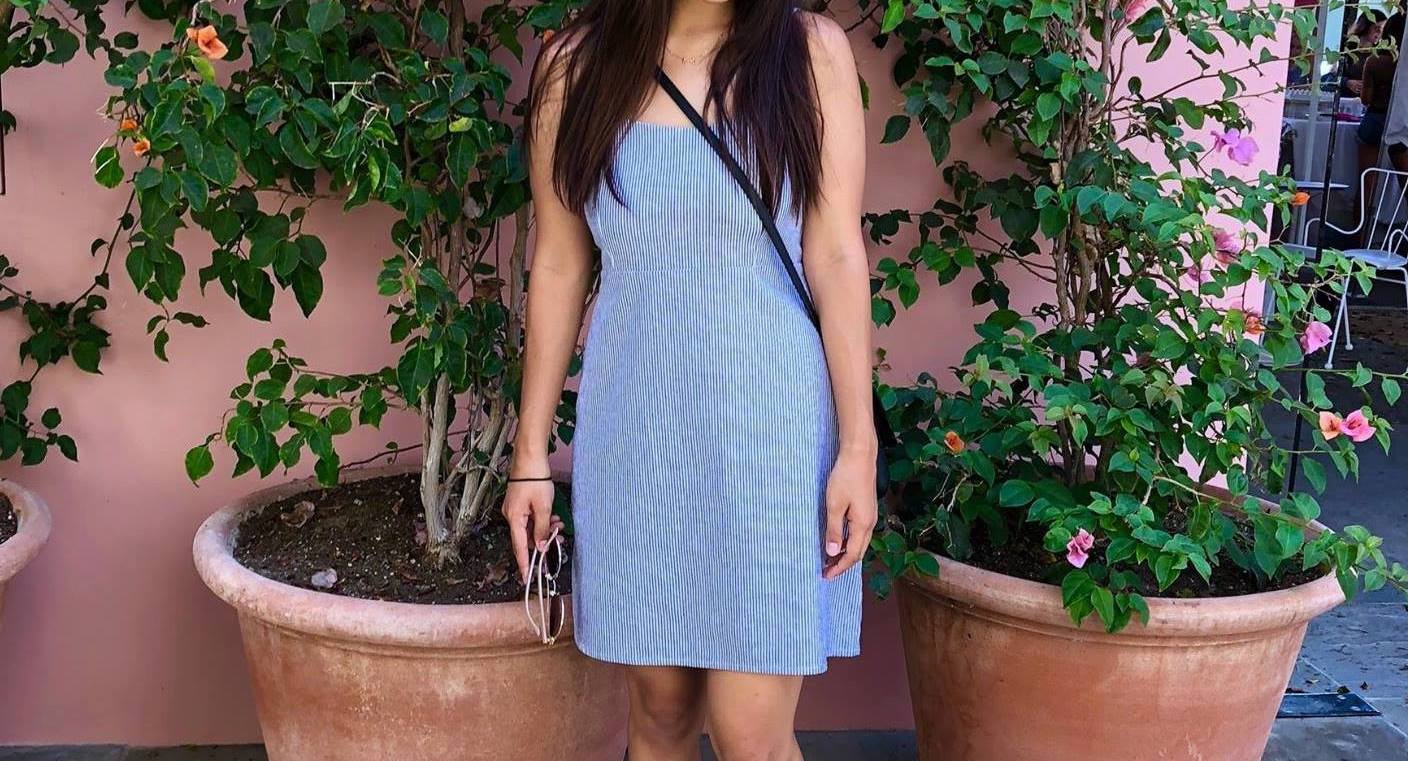The main themes that emerged in my dress practice interview were occupation, class, and location. My interviewee, my roommate Jen, likes to dress comfortably because she spends most of her time studying and going to school. Her occupation as a med student requires her to dress somewhat ‘professionally’ on a daily basis, especially on days that she’s required to volunteer at a hospital. Additionally, her full-time student status means that she is unable to work consistently and therefore, is financially dependent on her parents. Thus, she chooses to shop at places that are relatively inexpensive (a lot of fast fashion stores because they are the most accessible). Location was also an important factor in Jen’s dress practice. Jen stated that her style ‘changed for the better’ when she moved to New York: she became more outgoing and started experimenting with more colors and patterns. Back when she used to live in Los Angeles, Jen’s style influences were mostly her friends. Nowadays, her style is more ‘individualistic’ and original. The two images of Jen that I’ve included also relates to location: the first one shows Jen wearing a bodycon dress on a night out with her girlfriends and the second one shows her wearing a casual summer dress while out during the day in Los Angeles.
When it comes to sustainability, Jen doesn’t shop at the most ‘sustainable’ places because they are usually also the most expensive. Gender doesn’t play a big role in her dress practice at the moment. Jen said that during the wintertime, her style is pretty much unisex. However, during the summertime, she likes to dress more ‘feminine’.
The most interesting thing that I learned from our interview is how Jen meticulously organizes her closet, or lack thereof: I was amazed and thoroughly impressed by how each category/ section of clothing is organized by color and thickness. Additionally, I did not know that she regularly donates and sells her clothes. She enjoys having a small closet because it is easier to maintain. Owning fewer clothes also means that it’s less likely for her to get overwhelmed by having too many options to choose from. Unlike Jen, I am a clothes hoarder. I get emotionally attached to my clothes and have trouble even letting go of things that I don’t wear anymore.
The biggest difference between my dress practice and Jen’s is that I would consider my style to be more bold and ‘costume-y’ whereas hers is more along the lines of ‘business casual’. I attribute this difference to our separate occupations. Even though we’re both students, Jen is studying to be an occupational therapist while I am studying art and design. Both NYU and Parsons are liberal schools. However, I think that I have more freedom to experiment with fashion and to wear what I want because the ‘stakes’ are lower for me than they are for Jen. For example, I would assume that unfortunately, few people in her field would take Jen seriously if she, an aspiring occupational therapist, showed up for work wearing what I wore. On the other hand, dressing audaciously and ‘provocatively’ is oftentimes encouraged in more ‘creative’ fields of work.
In “The Dressed Body,” Entwistle concludes the text by suggesting how “…understandings of the dressed body need to explore the relationship between the body and dress, rather than abstract the body from dress (149).” Furthermore, the author argues that “…the dressed body is a crucial component in micro-social order and that, in order to understand the forces at work in dressing the body, a range of theoretical resources are needed (149-150).” Before taking this course, I was never fully aware of how intimate and personal the act of dressing one’s body is. I’ve always recognized that an individual’s style is a part of how she chooses to share her story with the world. However, I never thought about all the different subject positions (class, religion, race, occupation, gender, sexuality, etc.) that can impact an individual’s style. The dress practice interview made me more open-minded and accepting of others’ dress practices, especially of people whose styles differ from my own. Additionally, I learned that clothing style greatly impacts cognitive style. While it is common knowledge that clothes have a strong influence over the way other people perceive us, the clothes we wear can also influence the way we think. For example, Jen said that wearing scrubs while volunteering at a hospital makes her feel and act more professional.
Bibliography
Entwistle, Joanne. “The Dressed Body.” In Real Bodies: A Sociological Introduction, 133-50.


